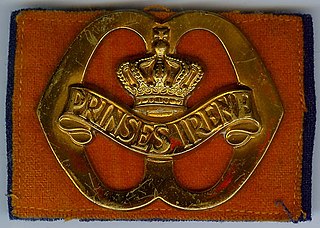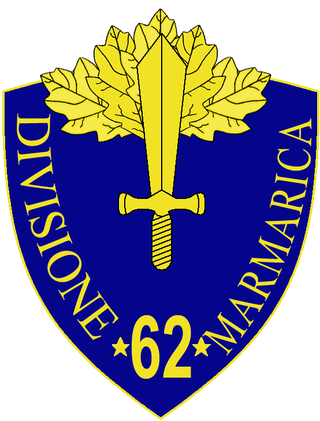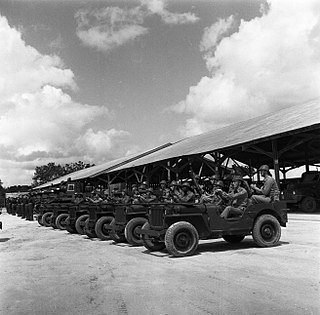
The Commandos, also known as the British Commandos, were formed during the Second World War in June 1940, following a request from Winston Churchill, for special forces that could carry out raids against German-occupied Europe. Initially drawn from within the British Army from soldiers who volunteered for the Special Service Brigade, the Commandos' ranks would eventually be filled by members of all branches of the British Armed Forces and a number of foreign volunteers from German-occupied countries. By the end of the war 25,000 men had passed through the Commando course at Achnacarry. This total includes not only the British volunteers, but volunteers from Greece, France, Belgium, Netherlands, Canada, Norway, Poland, and the United States Army Rangers and US Marine Corps Raiders, Portuguese Fuzileiros Portuguese Marine Corps were modelled on the Commandos.

The Independent Belgian Brigade was a Belgian and Luxembourg military unit in the Free Belgian forces during World War II, commonly known as the Piron Brigade after its commanding officer Jean-Baptiste Piron. It saw action in Western Europe and participated in the Battle of Normandy, the Liberation of Belgium, and fighting in the Netherlands over 1944-1945.

The 49th Infantry Division was an infantry division of the British Army. The division fought in the First World War in the trenches of the Western Front, in the fields of France and Flanders. During the Second World War, the division fought in the Norwegian Campaign and in North-western Europe. After the Second World War, it was disbanded in 1946, then reformed in 1947. It remained with Northern Command until finally disbanded in 1967.

The Royal Netherlands Army is the land branch of the Netherlands Armed Forces. Though the Royal Netherlands Army was raised on 9 January 1814, its origins date back to 1572, when the Staatse Leger was raised making the Dutch standing army one of the oldest in the world. It fought in the Napoleonic Wars, World War II, the Indonesian War of Independence, and the Korean War, and served with NATO on the Cold War frontiers in West Germany from the 1950s to the 1990s.

The Princess Irene Fusiliers Guards Regiment is a regiment of the Royal Netherlands Army, named after Princess Irene, the Granddaughter of Queen Wilhelmina, daughter of Queen Juliana, sister of Princess Beatrix and aunt of King Willem-Alexander. It is one of two regiments, along with the Garderegiment Grenadiers en Jagers, to be classed as 'Guards'.

The Volunteer Legion Netherlands was a collaborationist military formation recruited in the German-occupied Netherlands during World War II. It was formed in the aftermath of the German invasion of the Soviet Union and fought on the Eastern Front in the Waffen SS alongside similar formations from other parts of German-occupied Western Europe. It was the largest Dutch SS unit.

Hedel is a town in the Dutch province of Gelderland. It is a part of the municipality of Maasdriel, and lies about 7 km northwest of 's-Hertogenbosch.

Multi National Base Tarin Kot is a former International Security Assistance Force (ISAF) installation, used after the Netherlands Armed Forces' departure by the Afghan National Army. The base was located on the outskirts of Tarinkot, the capital of Uruzgan Province in southern Afghanistan.

The 62nd Infantry Division "Marmarica" was an infantry division of the Royal Italian Army during World War II. The division was formed on 9 May 1937 in Derna in Italian Libya and named Marmarica after the antique name for the surrounding region. The division's regimental depots were in mainland Italy in Abruzzo and shared with the 24th Infantry Division "Pinerolo", with both divisions recruiting their troops from and training them there. The Marmarica was classified as an auto-transportable division, meaning it had some motorized transport, but not enough to move the entire division at once. The division was destroyed on 5 January 1941 during the Battle of Bardia.
No. 47 Commando is a battalion size formation in the British Commandos, formed in August 1943 during the Second World War. The Commando was assigned to the 4th Special Service Brigade and served North West Europe and took part in the Normandy Landings, operations around Ostend, Antwerp and the Netherlands before being disbanded in January 1946. No. 47 Commando has recently been reformed and now takes back on its old role as an amphibious raider, replacing what was 1 Assault Group Royal Marines.

The 13th Light Brigade is one of the three combat brigades of the Royal Netherlands Army, the other ones being 11th Airmobile Brigade and 43rd Mechanised Brigade. The brigade is a fully motorised brigade, equipped with Fennek, Boxer and Bushmaster wheeled, armoured vehicles.

The Free Dutch Forces refers to the Dutch military formations of the Dutch government-in-exile and its colonies that were formed to fight alongside the Western Allies against Nazi Germany and its allies during World War II following the Dutch surrender in May 1940.

The current structure of the Royal Netherlands Army is as follows:

The 116th Infantry Brigade Royal Marines was an infantry brigade formation of the Royal Marines created in the final stages of the Second World War.

The 117th Infantry Brigade Royal Marines was an infantry brigade formation of the Royal Marines created in the final stages of the Second World War.

Operation Pheasant, also known as the Liberation of North Brabant, was a major operation to clear German troops from the province of North Brabant in the Netherlands during the fighting on the Western Front in the Second World War. This offensive was conceived as a result of the failure of Operation Market Garden and the allied effort to capture the important port of Antwerp. It was conducted by the allied 21st Army Group between 20 October to 4 November 1944.

The 1st Infantry Battalion of the Royal Netherlands East Indies Army was a Dutch colonial military unit that was active in the Dutch East Indies during World War II and the Indonesian National Revolution.

The Memre Boekoe barracks is a military installation in Paramaribo, Suriname. It was constructed during World War II as barracks for the American soldiers stationed in Suriname. It was originally named Kampement Gemenelandsweg. In 1950, it was renamed Prins Bernhard kampement. After the independence of Suriname on 25 November 1975, it was renamed Memre Boekoe barracks after Fort Boekoe, a fort used during the Boni Wars. It is currently used as the headquarters of the Surinamese Land Forces.

The history of Suriname during World War II was mainly focused on protecting the bauxite industry and guarding the borders with French Guiana which was part of Vichy France. From November 1941 onwards, 2,000 American troops were stationed in Suriname who transformed Airstrip Zanderij into a major airport, and constructed defensive works. No actual battles took place in Suriname. There was a political crisis in 1943, because Governor Johannes Kielstra used the state of emergency to imprison political opponents.

Hedel Bridge is a tied-arch bridge over the Meuse dating from 1937 near Hedel, Gelderland. The bridge was built for the Oude Rijksweg, a former part of the A2 motorway that connected 's-Hertogenbosch to Utrecht.




















